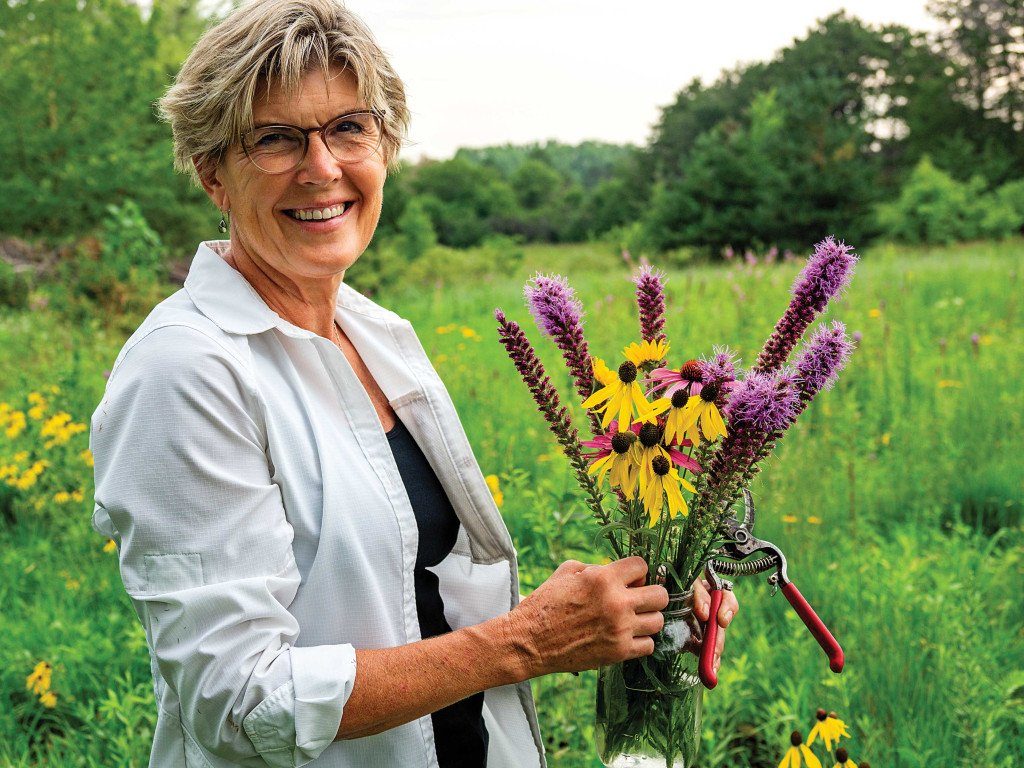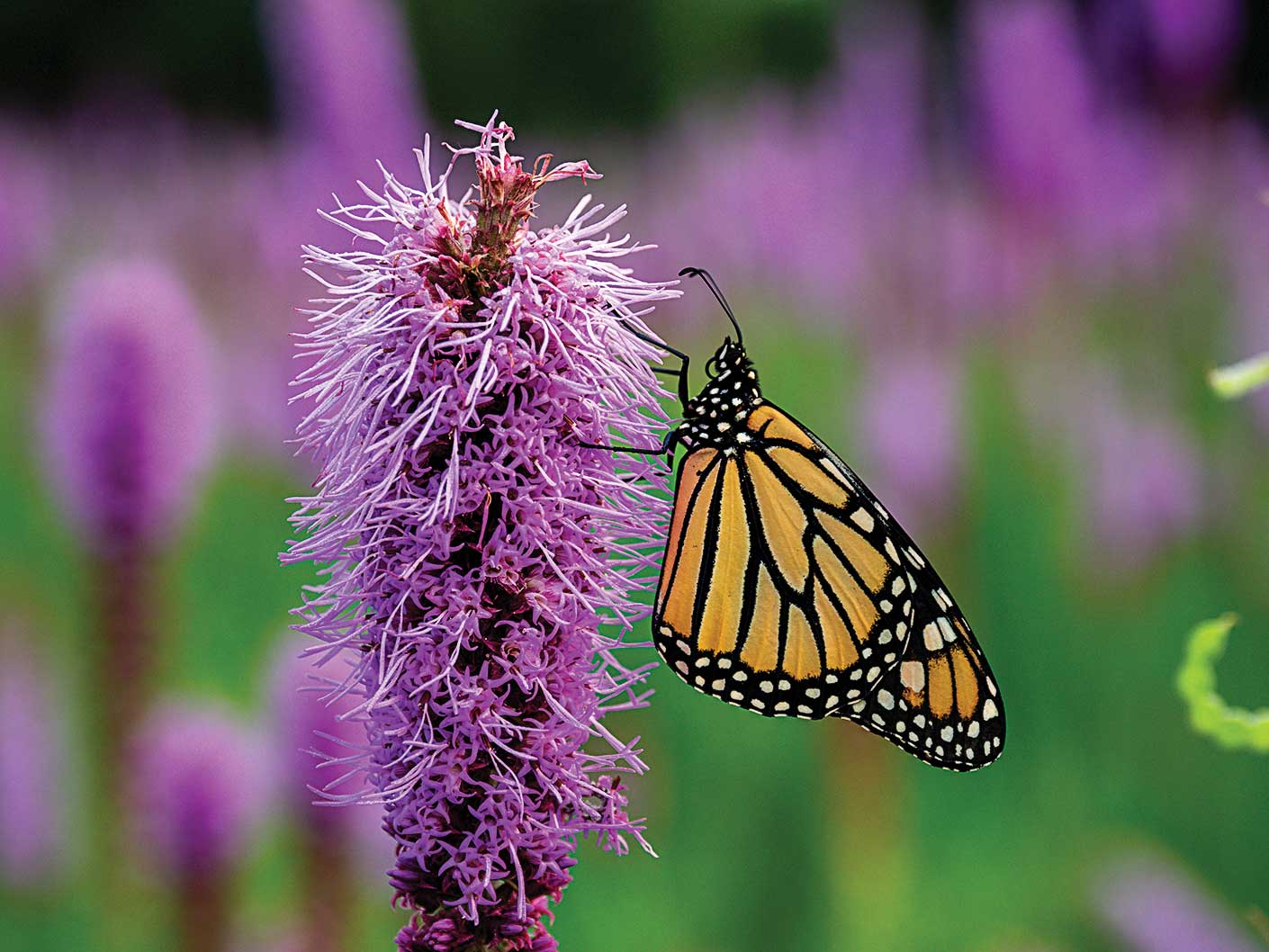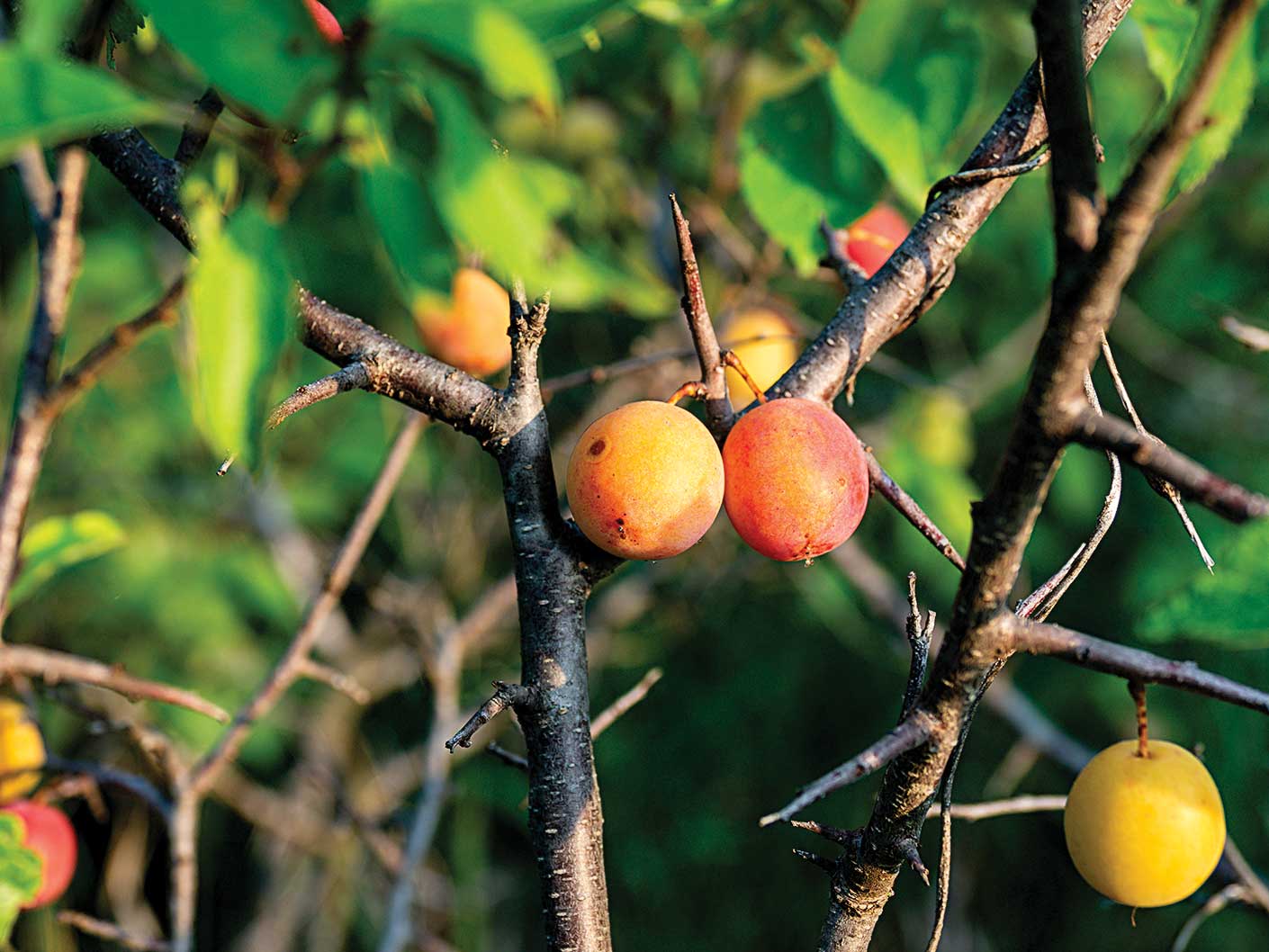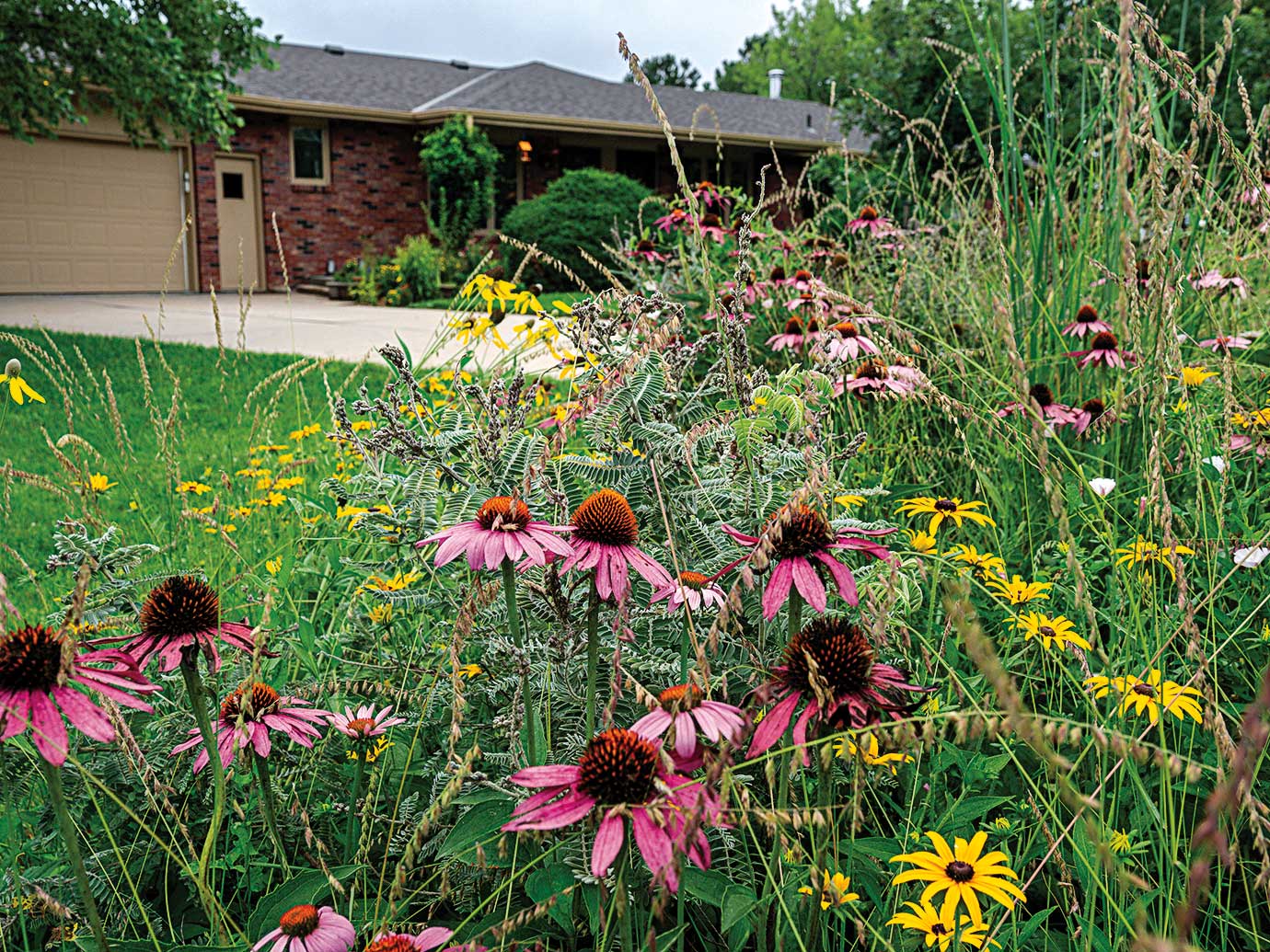An Acreage Transformed
Enlarge

Photo by Renae Blum
Story and photos by Renae Blum
When Sue Kirkpatrick bought her acreage in 2013, which is 3 miles east of Lincoln, she didn’t intend to become a native prairie hobbyist. After 30 years of living in neighborhoods with city ordinances, neighborhood covenants and manicured lawns, Kirkpatrick simply desired the freedom to do what she wanted in a more relaxed environment.
But things changed after she signed up for the Nebraska Master Naturalist Program in 2014. The program offers adults in-depth training on the natural world, as well as volunteer opportunities.
Kirkpatrick completed her training, which included both classroom time and hands-on outdoors learning, over the course of a week at the Niobrara Valley Preserve near Valentine.
“It was like adult summer camp. It was so fun, tromping around in the woods and water and prairie, and viewing bison, kayaking the Niobrara and sitting by campfires at night,” she said.

Kirkpatrick also learned from natural resource professionals about biodiversity, prairie restoration, and what plants belonged in her corner of Nebraska.
“As I learned about Nebraska ecosystems, it became clear that I wanted to do my part to conserve the plants and animals that belong on my 5 acres,” she said.
During her training and the volunteer opportunities that followed, Kirkpatrick also met many people who would help her on her journey: conservationists, nature educators, biologists, nature nerds, land managers and more.
Small Beginnings
When Kirkpatrick first moved to her place, much of it was annual sunflowers, young cedar trees and brome grass, an aggressive, non-native plant. It was mowed at first, so Kirkpatrick let things grow for a bit to see what popped up.
One element that has stayed from those early days is a patch of thickspike gayfeather (Liatris pycnostachya), a native species of the low, moist tallgrass prairies in southeastern Nebraska often planted in prairie restorations. It creates beautiful spires of purple flowers and is becoming rather uncommon in Nebraska, due to prairie loss and disturbances such as heavy grazing and herbicides.
The gayfeather patch was only about 15 yards in size at the time, and Kirkpatrick decided to let it grow. Every year since, it has increased and has now spread to about an acre of her property. When it blooms in late July and early August, the area directly behind Kirkpatrick’s house blazes into a stunning field of purple.

“I know it’s more of a monoculture in certain areas, but I’m OK with that,” Kirkpatrick said. “It’s really pretty.”
Another early project was professionally designed. Kirkpatrick removed a juniper tree from the end of her driveway and hired Benjamin Vogt, owner of Monarch Gardens, a prairie-inspired design firm in Lincoln, to create a display of native plants in its place. Today, the cluster of butterfly milkweed, native grasses, purple poppy mallow, purple coneflower and other native plants creates an attractive entrance to her property for both people and pollinators.
The Prairie Process
After planting various native plants around her house, Kirkpatrick turned her attention to a prairie restoration, planting her first half-acre area in the spring of 2017. She purchased a seed mix from Prairie Legacy, Inc., a Nebraska company that sells native plants and seeds for habitat restorations. Prairie Legacy selected a seed mix for Kirkpatrick of more than 50 native prairie plants, including purple prairie clover, yarrow, little bluestem and butterfly milkweed.

Kirkpatrick began the planting process by treating the area with an herbicide to kill off what lived there. Then, when the conditions were right for growth, she mixed the seeds with vermiculite to add bulk and planted them, tossing them directly on top of soil wetted by sprinklers.
She planted her second half-acre in the winter of 2019. Again, Kirkpatrick hand-planted the seeds, dropping them directly on the snow-covered ground.
Today, the two sections are thriving. No watering and little weeding is needed, though Kirkpatrick does mow or burn the sections once a year.
Kirkpatrick has also seeded other patches of her property with native plants, and around the edges of her property, she’s planted many native trees and shrubs. All this habitat has attracted a variety of wildlife, including birds, a snapping turtle, coyotes, opossum, raccoons, a fox, deer, turkeys and snakes.
A Transcendent Experience
“This experience is more than just land management,” Kirkpatrick said. “It’s transcendent. It’s about experiencing the awe, the wonder, and the miracle of nature.”
It’s also been a journey of personal growth for her. “I’m learning to treat myself with the same wholehearted acceptance that I grant to the ebb and flow of the biology on my 5 acres,” she said. “It’s all about trust and acceptance — trusting God and nature, accepting the various outcomes of my projects, and trusting that it’s going to be OK, whatever happens out there.” ■

Lessons Learned: Tips for Growing Native Plants at Home
By Renae Blum
Looking to try something similar to Kirkpatrick’s project? Here are some lessons she’s learned over the years, in her own words.
• Start small. One of the first things I did to my place was plant fescue, a non-native lawn grass, in bare patches of dirt so weeds wouldn’t take over. I won’t do that again.
The area was only 15 feet by 75 feet, so upon the advice of a conservation-minded person, I killed it with black plastic. (Clear plastic is effective, too.) After a summer of intensified heat on the fescue plot, it was ready for a seeding of native grasses. Not a big area, but a beginning.
• When you start to establish a prairie restoration, do what the professionals tell you to do. They really do know what they’re talking about. If they tell you to mow the first year, do it. The prairie takes a while to get established. As the saying goes, the first year it sleeps, second year it creeps, third year it leaps.
• Mowing and other mechanical methods of plant removal can be great tools. I’m still learning this one. When I first moved here from a manicured neighborhood, I was rebelliously anti-mowing. Well, there is a time and place for it. It is helpful in setting back weeds, establishing trails and creating a safe fire break before a prescribed burn.

• Get to know your weed whacker. One of the happiest days of my life was when I learned to operate mine. It’s my favorite tool. It goes places the mower can’t.
• Every action (or inaction) has a consequence. Every management decision has an effect, and sometimes your decision is to do nothing. Some of the consequences you will be happy about; some you might not like.
• Don’t worry too much about it. An important one. This place is not my bread and butter; it’s a hobby.
• If you feel like this is just too much work, maybe you should choose to do something else. When I bought an acreage 10 years ago, many people said, “An acreage … that’s a lot of darn work!” I didn’t buy it to make a lot of work for myself, and I don’t think it is a lot of work. I love going outside and checking on how my plants have grown, and watching for birds and other wildlife. If I didn’t have weeds to get after, or that darn “work” to do out there, I wouldn’t have as many opportunities to enjoy nature.
One year I had the idea that apple trees might be fun. Wrong! Too much work, no fun (for me). Also, no apples. Same with a patch of serviceberry bushes I put in nine years ago. I watered them for a couple of years and mowed around them even longer, but they never grew. Time to move on.
• Understand and accept that your prairie will change — while continuing to manage it. For example, at my place, the gayfeather first established itself in the northwestern corner of my field, but it has spread out and grown thicker in another corner. False boneset is currently becoming more prevalent in the original northwestern corner.
While enjoying the natural changes in plant populations, I need to be watching my prairie in order to do the things that mimic natural disturbance phenomena (strategic grazing, prescribed burning or discretionary mowing), which gives different plants a chance to grow. A variety of species helps to keep a prairie healthy. And, of course, I’m always keeping an eye open for noxious weeds and invasives which require intervention.
•Sit down. This is a difficult lesson. A friend suggested that I put in some benches or seating in strategic places. I laughed, asking, “How often do you think I sit down outside?” Well, since then, I’ve been practicing being still out there, listening, observing — and loving it.
 Nebraskaland Magazine
Nebraskaland Magazine


